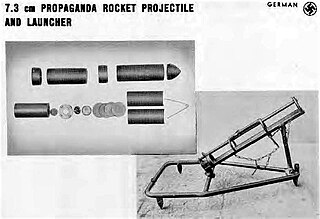 W
WThe Propagandawerfer 41 was a rocket launcher for the associated non-lethal Propagandagrante 41 rocket. The launcher and rocket were a light man-portable system fired by specially-trained propaganda troops during World War II to distribute leaflets.
 W
WJane Anderson was an American journalist of Nazi propaganda in Germany during World War II. She was indicted on charges of treason in 1943, but charges were dropped after the war for lack of evidence.
 W
WAsia Raya was a newspaper published in the Dutch East Indies during the Japanese occupation.
 W
WA total of sixty-nine poems, sixty short stories, and three serials were published in Asia Raya, a newspaper in the Dutch East Indies and early Indonesia. First published on 29 April 1942, months after the Empire of Japan invaded the Indies, Asia Raya was established under the occupation government and intended as a vehicle for pro-Japanese propaganda – including literature. Run by both Japanese and native staff, the newspaper remained in publication until 7 September 1945, closing less than a month after Indonesia proclaimed its independence.
 W
WAspidistra was a British medium wave radio transmitter used for black propaganda and military deception purposes against Nazi Germany during World War II. At times in its history it was the most powerful broadcast transmitter in the world. Its name – after the popular foliage houseplant – was inspired by the comic song The Biggest Aspidistra in the World, best known as sung by Gracie Fields.
 W
WBritain re-created the World War I Ministry of Information for the duration of World War II to generate propaganda to influence the population towards support for the war effort. A wide range of media was employed aimed at local and overseas audiences. Traditional forms such as newspapers and posters were joined by new media including cinema (film), newsreels and radio. A wide range of themes were addressed, fostering hostility to the enemy, support for allies, and specific pro war projects such as conserving metal and growing vegetables.
 W
WBritish Security Co-ordination (BSC) was a covert organisation set up in New York City by the British Secret Intelligence Service (MI6) in May 1940 upon the authorisation of the Prime Minister, Winston Churchill.
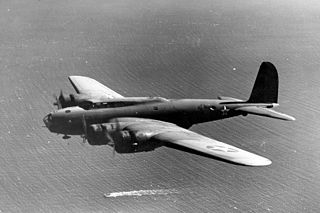 W
WCeiling Unlimited (1942–1944) is a CBS radio series created by Orson Welles and sponsored by the Lockheed-Vega Corporation. The program was conceived to glorify the aviation industry and dramatize its role in World War II.
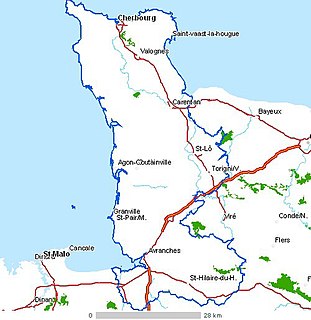 W
WFortress Europe was a military propaganda term used by both sides of the Second World War which referred to the areas of Continental Europe occupied by Nazi Germany, as opposed to the United Kingdom across the Channel.
 W
WGermany Must Perish! is a 104-page book written by Theodore N. Kaufman, which he self-published in 1941 in the United States. The book advocated genocide through the sterilization of all Germans and the territorial dismemberment of Germany, believing that this would achieve world peace. Kaufman founded the Argyle Press in Newark, New Jersey, United States, in order to publish this book. He was the sole proprietor of the Argyle Press and it is not known to have published any other works.
 W
WHello Americans (1942–43) is a CBS Radio series produced, directed and hosted by Orson Welles. Created to promote inter-American understanding and friendship during World War II, the series aired Sundays at 8 p.m. ET beginning November 15, 1942. Its last broadcast was January 31, 1943. Sponsored by the Office of the Coordinator of Inter-American Affairs, the drama series featured many of the actors from Welles's Mercury Theatre repertory ensemble.
 W
WIf Day was a simulated Nazi German invasion and occupation of the Canadian city of Winnipeg, Manitoba, and surrounding areas on 19 February 1942, during the Second World War. It was organized by the Greater Winnipeg Victory Loan organization, which was led by prominent Winnipeg businessman J. D. Perrin. The event was the largest military exercise in Winnipeg to that point.
 W
WPropaganda of Fascist Italy was the material put forth by Italian Fascism to justify its authority and programs and encourage popular support.
 W
WThe Japanese Committee on Trade and Information was a Japanese-run propaganda organization that was active in the United States between 1937 and 1940. In Japanese it was called the Jikyoku Iinkai (時局委員会), literally the "Current Affairs Committee".
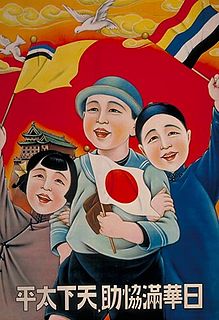 W
WPropaganda in imperial Japan, in the period just before and during World War II, was designed to assist the ruling government of Japan during that time. Many of its elements were continuous with pre-war elements of Shōwa statism, including the principles of kokutai, hakkō ichiu, and bushido. New forms of propaganda were developed to persuade occupied countries of the benefits of the Greater Asia Co-Prosperity Sphere, to undermine American troops' morale, to counteract claims of Japanese atrocities, and to present the war to the Japanese people as victorious. It started with the Second Sino-Japanese War, which merged into World War II. It used a large variety of media to send its messages.
 W
WKeep Calm and Carry On was a motivational poster produced by the British government in 1939 in preparation for World War II. The poster was intended to raise the morale of the British public, threatened with widely predicted mass air attacks on major cities. Although 2.45 million copies were printed, and the Blitz did in fact take place, the poster was only rarely publicly displayed and was little known until a copy was rediscovered in 2000 at Barter Books, a bookshop in Alnwick. It has since been re-issued by a number of private companies, and has been used as the decorative theme for a range of products.
 W
WLoose lips sink ships is an American English idiom meaning "beware of unguarded talk". The phrase originated on propaganda posters during World War II. The phrase was created by the War Advertising Council and used on posters by the United States Office of War Information.
 W
WThe propaganda used by the German Nazi Party in the years leading up to and during Adolf Hitler's leadership of Germany (1933–1945) was a crucial instrument for acquiring and maintaining power, and for the implementation of Nazi policies. The pervasive use of propaganda by the Nazis is largely responsible for the word propaganda itself acquiring its present negative connotations.
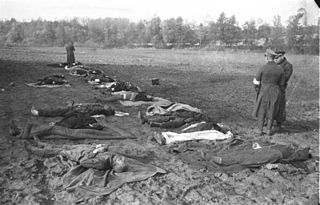 W
WThe Nemmersdorf massacre was a civilian massacre perpetrated by Red Army soldiers in the late stages of World War II. Nemmersdorf was one of the first pre-war ethnic German villages to fall to the advancing Red Army in World War II. On 21 October 1944, Soviet soldiers reportedly killed many German civilians as well as French and Belgian POWs.
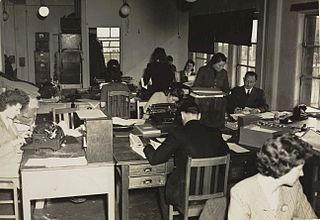 W
WThe Netherlands Indies Government Information Service (NIGIS) was a civil secret service and propaganda organisation based in Australia, during and after World War II.
 W
WOPROP! was a German airborne propaganda leaflet dropped over several Danish cities at the German invasion of Denmark on 9 April 1940. The leaflets were signed by the head of Operation Weserübung Süd, General Leonhard Kaupisch. The text, written in broken but understandable Danish mixed with Norwegian, justified the German invasion as fraternally protecting Danish and Norwegian neutrality against British aggression, denounced Winston Churchill as a warmonger, and exhorted the Danish populace not to resist the German presence while an arrangement with the Danish government was being negotiated.
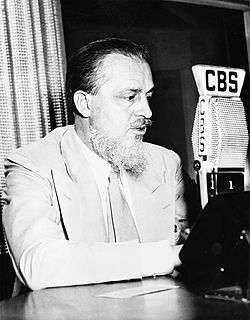 W
WOur Secret Weapon (1942–1943) is a CBS radio series created to counter Axis shortwave radio propaganda broadcasts during World War II. Writer Rex Stout, chairman of the Writers' War Board and representative of Freedom House, would rebut the most entertaining lies of the week. Sponsored by Freedom House and Philco, the 15-minute weekly series was broadcast Sundays at 7 p.m. ET through October 18, 1942, then Fridays at 7:15 p.m. ET through its final broadcast October 8, 1943.
 W
WThroughout World War II, both the Axis and Allied sides used propaganda to sway the opinions of Indian civilians and troops, while at the same time Indian nationalists applied propaganda both within and outside India to promote the cause of Indian independence.
 W
WThe Radio Bari station, broadcasting from Bari in southern Italy, with a power of 20 kW, was commissioned by the Italian national broadcasting company, EIAR, in 1932.
 W
WRoyal Air Force Film Production Unit produced propaganda films depicting RAF personnel and aircraft both on the ground and in aerial action during World War II from 1941 to 1945. Personnel included early commander Flight Lieutenant John Boulting; later director Richard Attenborough flew camera missions over Europe.
 W
WThe Sea Hound is an American radio adventure series that ran from June 29, 1942, to August 7, 1951. It began on the Blue Network June 29, 1942 – September 22, 1944, as a 15-minute serial for young audiences, featuring Ken Daigneau as Captain Silver of the ship The Sea Hound. Other members of the cast were Barry Thompson as Captain Silver, Bob Hastings as Jerry, and Alan Devitt as Kai. Doug Browning was the announcer.
 W
WCommunist propaganda in the Soviet Union was extensively based on the Marxist–Leninist ideology to promote the Communist Party line. Propaganda was one of the many ways the Soviet Union tried to control its citizens. In the Stalin era, it penetrated even social and natural sciences giving rise to the pseudo-scientific theory of Lysenkoism, whereas fields of real knowledge, as genetics, cybernetics and sociology were condemned and forbidden as "bourgeois pseudoscience".
 W
WThe Tatsfield Receiving Station – known formally as the BBC Engineering Measurement and Receiving Station – was a radio broadcasting signals-receiving and frequency-measuring facility operated by the British Broadcasting Corporation (BBC) on the North Downs just south of London in the United Kingdom.
 W
WWhy Britain is at War is a polemic treatise written by Harold Nicolson and first published by Penguin Books on 7 November 1939 shortly after the Second World War began. In the book, Nicolson explores Adolf Hitler's insatiable grasp for power, the foreign policy brinkmanship and deception ploys adopted by Nazi Germany, and Hitler's use of actual and implied force to get his way at the negotiation table. The Penguin Special edition originally cost 6d and sold a hundred thousand copies.
 W
WWhy We Fight is a series of seven documentary films commissioned by the United States government during World War II to explain to U.S. soldiers their country's involvement in the war. Later on, they were also shown to the U.S. public to persuade them to support U.S. involvement in the war.
 W
WPolitical cartoons produced during World War II by both Allied and Axis powers commented upon the events, personalities and politics of the war. Governments used them for propaganda and public information. Individuals expressed their own political views and preferences.